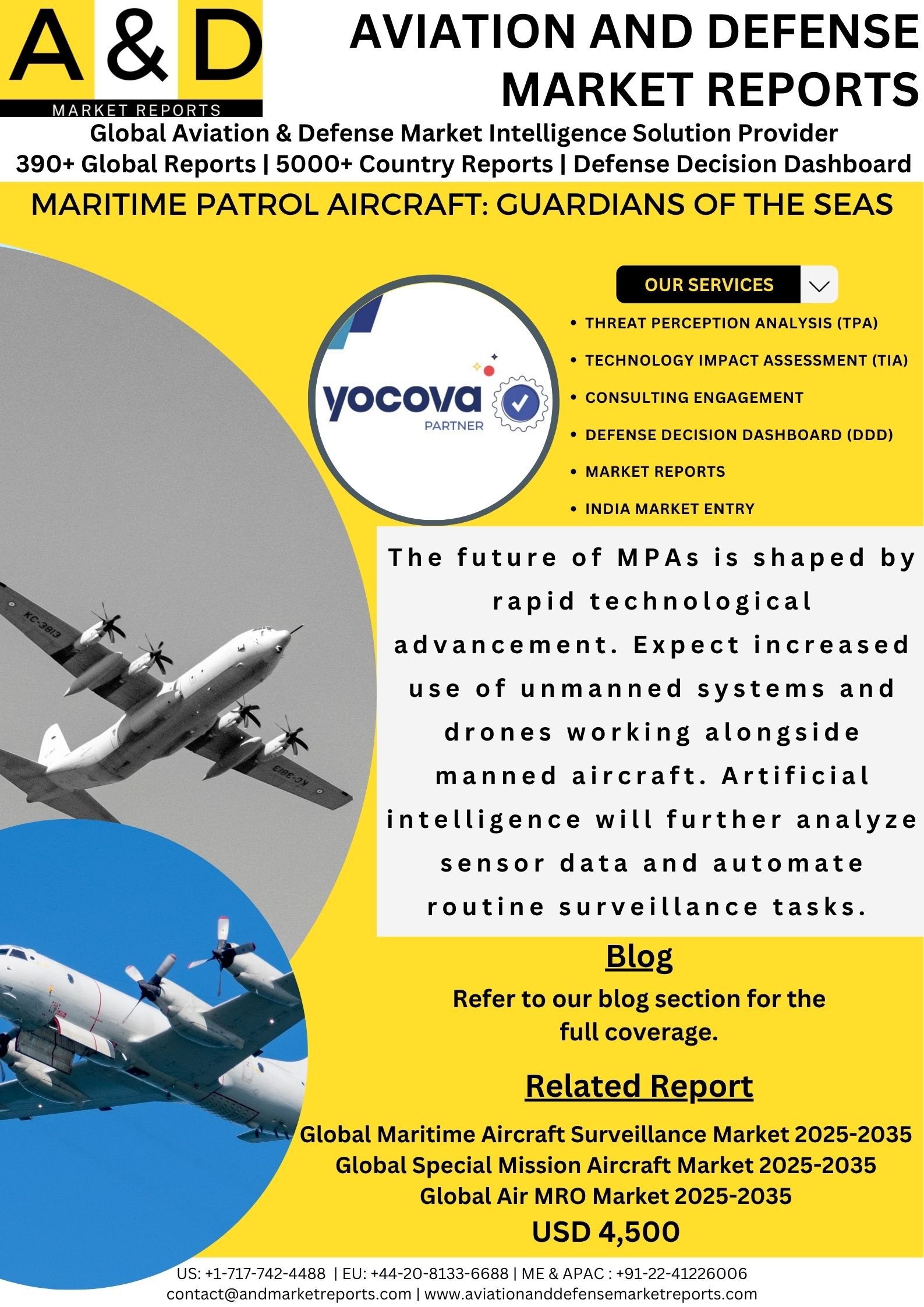maritime patrol aircraft : In an era where the world’s oceans sustain economies, enable global trade, and pose strategic vulnerabilities, maritime patrol aircraft (MPA) stand as silent sentinels. These specialized aircraft are indispensable to modern nations, providing surveillance, defense, and humanitarian coverage across vast and unpredictable maritime expanses. From their modest beginnings during the First World War to today’s sensor-laden multi-role platforms, MPAs have transformed the face of coastal security and naval operations.
The Evolution of Maritime Patrol Aircraft
Early Beginnings
The requirements of World War I brought about the birth of maritime patrol aviation. Initially, airships and primitive landplanes were pressed into service for anti-submarine patrols. Countries like Britain, France, and Germany recognized the need to monitor coastal areas and secure supply routes, leading to the creation of larger flying boats and the introduction of long-range coastal patrols. The innovation continued between the wars, with aircraft like the Felixstowe F.3 and Curtiss F5L extending patrol range and payload, supporting a new role in anti-submarine warfare (ASW).
World War II and the Cold War
World War II marked a dramatic leap in both the scale and technology of MPAs. Aircraft such as the British Short Sunderland and the American Consolidated PBY Catalina became legendary for their endurance, search and rescue missions, and submarine hunting efficiency. The Cold War pushed development further, with the Lockheed P-2 Neptune and later the P-3 Orion taking center stage. Equipped with sonar buoys, magnetic anomaly detectors, and anti-ship weaponry, these platforms monitored vast oceanic spaces, deterring enemy submarine incursions and gathering vital intelligence.
The Modern Era
Today’s maritime patrol aircraft, like the Boeing P-8A Poseidon, combine jet-powered speed, advanced sensors, and networked battle management systems. These aircraft are capable of multi-domain operations, providing maritime surveillance, anti-submarine and anti-surface warfare, search and rescue (SAR), and environmental protection on a global scale.
Core Roles and Capabilities
Surveillance and Reconnaissance
The primary mission of an MPA is maritime surveillance. Utilizing radar, electro-optical/infrared cameras, satellite links, and electronic intelligence (ELINT) equipment, MPAs can detect and identify ships, submarines, and suspicious activity over thousands of kilometers of open sea. This capability is crucial for border security, combating piracy, safeguarding sea lanes, and monitoring exclusive economic zones (EEZs).
Anti-Submarine Warfare (ASW)
Submarines, stealthy and deadly, represent a significant naval threat. MPAs counter this with state-of-the-art sensors: they drop sonobuoys into the ocean, use magnetic anomaly detectors to find sub-surface targets, and can deploy torpedoes or depth charges to neutralize threats. The ability to operate at low altitudes over water for extended durations makes the MPA a persistent and agile hunter.
Anti-Surface Warfare (AShW)
Ships—whether part of hostile naval fleets, unauthorized fishing vessels, or smugglers—are tracked and, if necessary, intercepted by MPAs. Modern aircraft can carry anti-ship missiles, laser-guided bombs, and the technologies required to direct naval assets to potential threats swiftly.
Search and Rescue (SAR) and Humanitarian Roles
In peacetime, MPAs are invaluable assets in search and rescue missions. They can cover immense distances rapidly, locate vessels or individuals in distress with thermal imaging and radar, and coordinate rescue operations by radio, often reaching areas inaccessible to smaller aircraft or surface ships.
Environmental Monitoring
Given the rise of ecological threats—oil spills, illegal dumping, or maritime disasters—MPAs now play key roles in environmental surveillance. Their sensors detect pollution and track changes in water quality, providing authorities with early warning and response capability.
Modern Strategic Importance
- Security and Law Enforcement: As coastal nations contend with illegal fishing, smuggling, piracy, and territorial disputes, MPAs are deployed to maintain an active, visible deterrent and to respond rapidly to emergent threats.
- Force Multiplication: By integrating with satellites, drones, and surface fleets, MPAs extend reach, enhance intelligence sharing, and amplify naval presence without the cost of deploying capital ships.
- National Sovereignty: In geopolitically sensitive regions—the South China Sea, Arctic, or disputed maritime boundaries—MPAs are critical for asserting national interests and responding to incursions.
- Technological Innovation: Modern platforms boast digital cockpits, networked data links, open-architecture mission systems, and even autonomous features, ensuring adaptability to new threats and faster upgrades.
Operational Challenges
While invaluable, MPAs face challenges:
- Harsh Weather: Severe storms and turbulent seas can hamper operations, reduce sensor accuracy, and pose risks to crew and airframe.
- High Costs: Advanced sensors, long-endurance airframes, and global operational needs make MPAs some of the most expensive aerial platforms.
- Evolving Threats: Increased use of stealth submarines, cyber warfare, and anti-air capabilities by adversaries demand constant adaptation and modernization.
The Future of Maritime Patrol Aircraft
The future of MPAs is shaped by rapid technological advancement. Expect increased use of unmanned systems and drones working alongside manned aircraft. Artificial intelligence will further analyze sensor data and automate routine surveillance tasks. Multi-mission platforms—operating in cyber, space, and maritime domains simultaneously—will enable even better situational awareness.
The roles of MPAs are expanding beyond traditional maritime borders. Environmental monitoring, disaster response, and even commercial applications are increasingly significant. As long as the world’s oceans remain vital and contested, maritime patrol aircraft will remain at the forefront—adaptable, vigilant, and essential to homeland security.
Conclusion
From humble beginnings as basic reconnaissance planes to their modern incarnation as sensor-packed multi-mission platforms, maritime patrol aircraft are at the vanguard of oceanic security. As global commerce, resource competition, and new maritime challenges rise, these aircraft will only grow in strategic significance, ensuring safe seas and secure nations far into the future.
